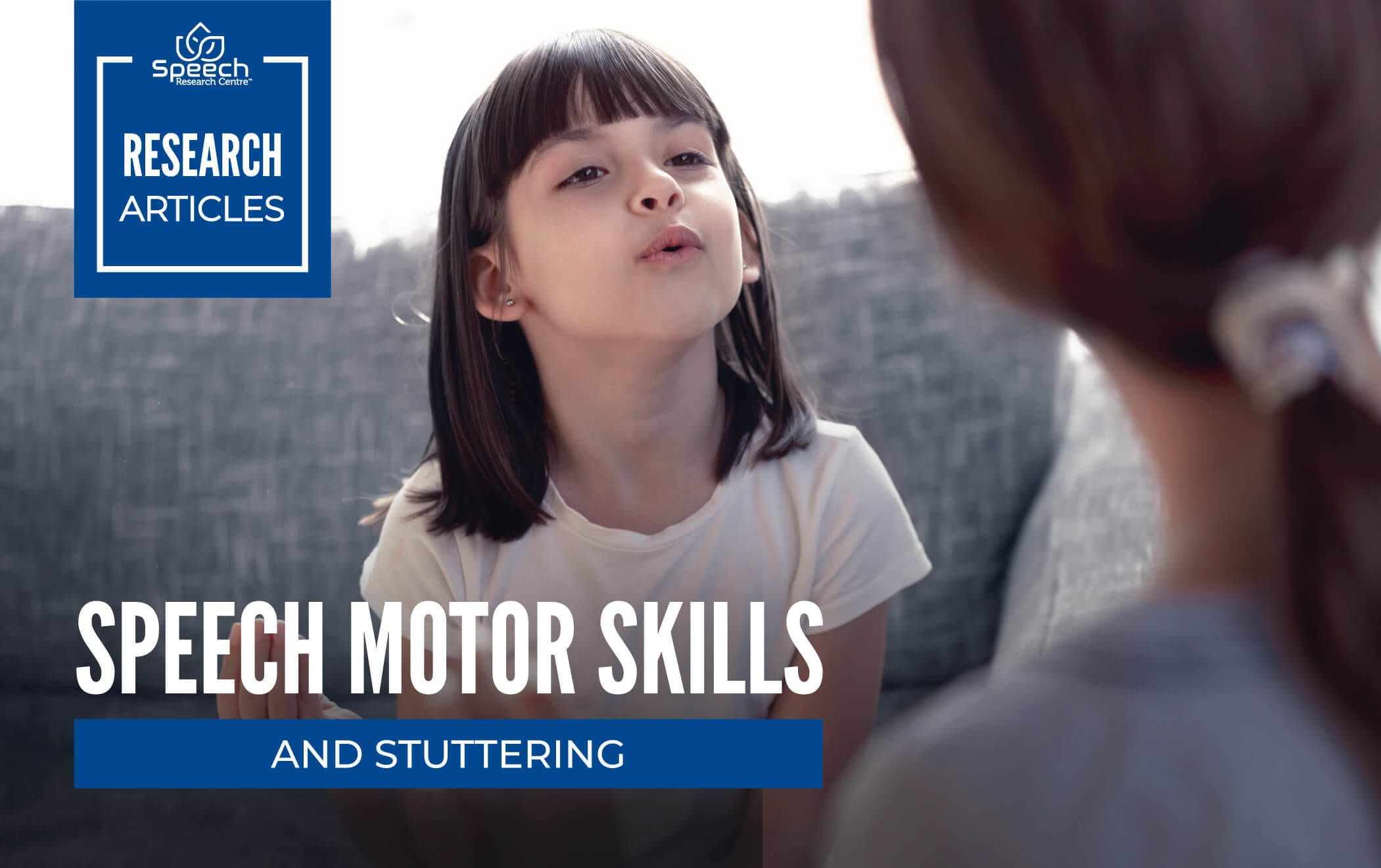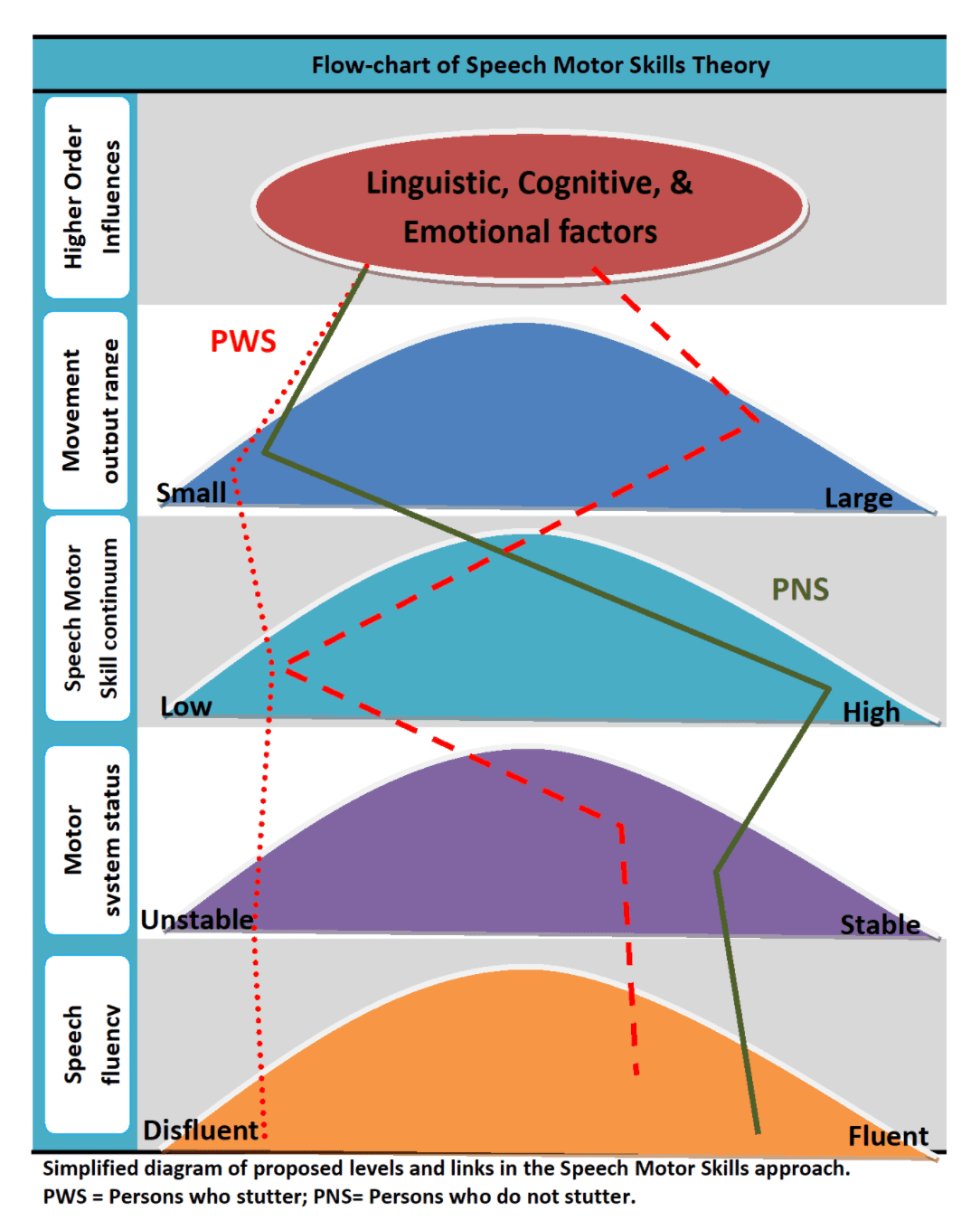
A Speech Motor Skills approach to Stuttering
Limitations in speech motor skills may lead to stuttering behaviour.
This article proposes a theory of stuttering origin where limitations in speech motor skills may lead to stuttering behaviours.
The article published in the Journal of Motor Behaviour summarizes thirty years of systematic research by Dr. Pascal van Lieshout and colleagues (Namasivayam and Van Lieshout 2011) and suggests that persons who stutter (PWS) may have a limited ability to acquire and perform speech movements efficiently (i.e. limited speech motor skills). The article has been cited over 80 times and has been influential in changing causal perspectives of stuttering.
The authors review converging lines of evidence from behavioural, kinematic, and neuroimaging data that point to limitations in speech motor skills in PWS. From their review, they conclude that PWS differ from persons who do not stutter (PNS) in terms of their ability to improve with practice and retain practiced changes in the long term and that they are less efficient and less flexible in their adaptation to lower (motor) and higher (cognitive–linguistic) order requirements that impact on speech motor functions. These findings, in general, provide empirical support for the position that PWS may occupy the low end of the speech motor skill continuum as argued in the Speech Motor Skills (SMS) approach (Van Lieshout, Hulstijn, & Peters, 2004).
The strength of the SMS approach is its ability to explain and predict how and why interactions between language, cognitive, emotional, and sensorimotor systems can lead to certain observed behaviours in PWS (Van Lieshout et al., 2004). Although by no means a complete account of all stuttering phenomena, the SMS approach offers a theory-driven testable platform from which it is possible to provide insights as to why PWS might differ from PNS (rather than just how) in terms of their abilities to produce fluent speech (Peters et al., 2000).
Figure 1 represents a simplified diagram of proposed levels and links in the SMS approach. The top panel indicates higher-order factors that may influence movement output resulting in smaller or larger movements. The consequences of the (small or large) movement output depend on an individual’s speech motor skill levels. For example, an individual PWS who is faced with small amplitudes (e.g., due to increased speech-rate demands) and limited speech motor skills may demonstrate unstable motor behaviours, resulting in disfluent speech (red dotted line). In contrast, for an individual PNS who faces similar movement amplitudes but with very good speech motor skills, the motor system would remain stable and result in fluent speech (solid green line).
Finally, even with the same limited speech motor skills, if the individual PWS produces larger movements (e.g., as a compensatory strategy), it would be sufficient to selectively increase kinesthetic feedback to maintain stable motor behaviours and fluent speech (dashed line). It is important to note that the dotted and dashed lines (in red colour) symbolize trajectories for the same speaker (PWS) with limited speech motor skills but under different conditions.
(i.e., one in which requirements allow for larger movements and thus provide more stable behaviour [red dashed line] and one in which the requirements induce small movements leading to less stable behaviour [red dotted line] and as a result stuttering.
Article Conclusion: Based on the findings discussed, there is evidence to support the claim from the SMS approach that PWS may be located more toward the unskilled (weak) end of a presumed (normal) speech motor skill continuum (Van Lieshout et al., 2004).
Figure 1. Simplified diagram of proposed levels and links in the Speech Motor Skills approach.

Citation: Namasivayam., AK & Van Lieshout, P. (2011). Speech Motor Skill and Stuttering, Journal of Motor Behavior, 43:6, 477-489, DOI:10.1080/00222895.2011.628347
References:
Namasivayam., AK & Van Lieshout, P. (2011). Speech Motor Skill and Stuttering, Journal of Motor Behavior, 43:6, 477-489.https://www.tandfonline.com/doi/abs/10.1080/00222895.2011.628347
Peters, H. M., Hulstijn, W., & Van Lieshout, P. H. (2000). Recent developments in speech motor research into stuttering. Folia phoniatrica et logopaedica, 52(1-3), 103-119.
Van Lieshout, P. H. H. M., Hulstijn, W., & Peters H. F. M (1996). From planning to articulation in speech production: What differentiates a person who stutters from a person who does not stutter. Journal of Speech and Hearing Research, 39, 546-564.
Van Lieshout, P. H. H. M., Hulstijn, W., & Peters H. F. M (2004). Searching for the weak link in the speech production chain of people who stutter: A motor skill approach. In: B. Maassen, R. Kent, H.F.M. Peters, P. Van Lieshout, & W. Hulstijn (eds.). Speech Motor Control In Normal And Disordered Speech (pp. 313-355). Oxford, UK: Oxford University Press.
Namasivayam, A. K., & Van Lieshout, P. H. H. M. (2008). Investigating speech motor practice and learning in people who stutter. Journal of Fluency Disorders, 33, 32-51.
Namasivayam, A. K., Van Lieshout, P. H. H. M., & De Nil, L. F. (2008). Bite-block perturbation in people who stutter: Immediate compensatory and delayed adaptive processes. Journal of Communication Disorders, 41, 372-394.
Namasivayam, A. K., Van Lieshout, P. H. H. M., McIlroy, W. E., & De Nil, L. F. (2009). Sensory feedback dependence hypothesis in persons who stutter. Human Movement Science, 28, 688-707.
https://www.tandfonline.com/doi/abs/10.1080/00222895.2011.628347